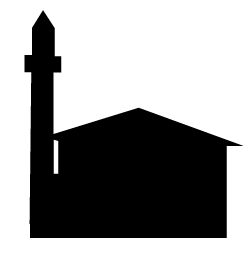Gegelidzeebi
Gegelidzeebi Mosque
Part of the Keda Cultural Route, Gegelidzeebi mosque found itself at the center of a minor controversy in late 2017, when regional cultural agency officials discovered that locals had painted the interior and exterior bright blue and attempted to weatherproof the building with plastic windows and spray foam insulation. Particle board paneling on the interior also obscured original paintings and carvings, to the horror of heritage experts. The fate of Gegelidzeebi vividly illustrates the ongoing tension between the desire to preserve historic elements and the need to make religious spaces safe and accessible in a harsh climate—all in one of the country’s most economically marginal regions. The mosque was relatively well-maintained after decades of Soviet repurposing; at various points, it served as a shop, a warehouse, and a school. Even in its present condition, a few visible panels of intricately carved woodwork framing the balcony, mihrab, and entrance suggest a high level of craftsmanship. Both the mihrab and the doorframe feature Ottoman tulip carvings; tiered cornices at the base of the balcony include herringbone, interwoven knots, medallions, and incised geometric patterns. Abstract floral template carvings adorn the balcony, door, and minbar. On the lower floor, traditional columns with hooks support the mezzanine level; upstairs, fluted doric columns support the ceiling. The dome is painted in a typical late nineteenth century style, with floral wreaths, swags of tasseled fabric, and medallions.
DISTRICT: Keda
LOCATION: 41°38’53.8”N 42°04’38.2”E
POPULATION: 428
CONSTRUCTION DATE: 1880-1900 (hijri 1297-1318)
RENOVATION DATE(S): 2016-2017
CRAFTSMEN: Unknown
MINARET: No
